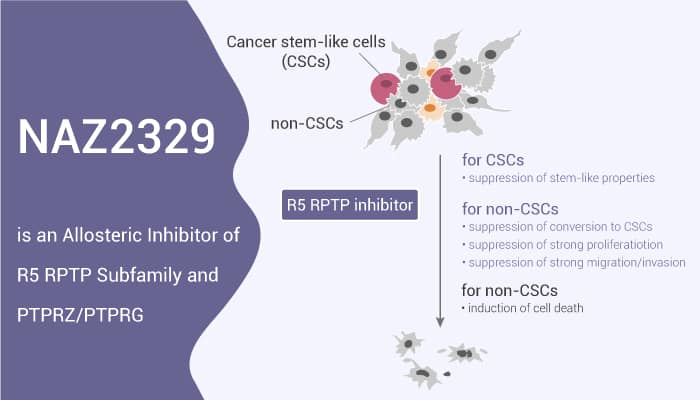The R5 subfamily of receptor protein tyrosine phosphatases (RPTPs) includes PTPRZ and PTPRG. Specifically, PTPRZ1 is a member of the receptor tyrosine phosphatase family. Besides, PTPRZ1 encodes a one-way type I membrane protein with two cytoplasmic tyrosine-protein phosphatase domains, α-carbonic anhydrase domain, and fibronectin III domain. There is a close relationship between the expression of PTPRZ1 (human PTPRZ) and cancer stemness. Moreover, the proximal phosphatase domain (D1) is active, but the distal D2 domain is inactive.
There are three types of PTPRZ: two transmembrane PTPRZ-A and PTPRZ-B, and one secretes PTPRZ-S. Furthermore, these are preferentially expressed as chondroitin sulfate (CS) proteoglycans in the central nervous system (CNS). In normal animals, PTPRZ receptor isoforms play an important role in maintaining oligodendrocyte precursor cells in an undifferentiated state. The combination of PTPRZ-A and its extracellular ligand pleiotropic controls the differentiation time of oligodendrocyte precursor cells in vivo. Meanwhile, inhibition of PTPRZ attenuates the malignant characteristics of glioblastoma cells, including cell proliferation and migration in vitro and tumor formation in vivo. Therefore, inhibition of PTPRZ is a potential strategy for the treatment of malignant glioma. Here, we will introduce an allosteric, noncompetitive, and reversible inhibitor of RPTPs, NAZ2329.

NAZ2329 is an Allosteric Inhibitor of the R5 RPTP Subfamily and PTPRZ/PTPRG.
First of all, NAZ2329 allosterically and preferentially inhibits PTPRZ (IC50=7.5 µM for hPTPRZ1) and PTPRG (IC50=4.8 µM for hPTPRG) over other PTPs. Nonetheless, NAZ2329 binds to the active D1 domain and more potently inhibits PTPRZ-D1 fragment (IC50=1.1 µM) than the whole intracellular (D1+D2) fragment (IC50=7.5 µM). Interestingly, NAZ2329 can effectively inhibit tumor growth of the glioblastoma cells and suppress stem cell-like properties.
In the second place, NAZ2329 with 0-25 µM for 48 hours dose-dependently inhibits cell proliferation and migration in all cell lines. These cell lines include rat glioblastoma cells bearing C6 clone and human U251 glioblastoma cells. Importantly, NAZ2329 obviously promotes the phosphorylation level of paxillin at the Tyr-118 site, leading to inhibition for PTPR substrate. Particularly, NAZ2329 dose-dependently inhibited sphere formation by C6 cells accompanied by a decrease in SOX2 expression. Obviously, NAZ2329 suppressed the self-renewal of sphere-forming C6 cells.
Last but not the least, NAZ2329 with 22.5 mg/kg by IP twice per week for 40 days alone has a moderate inhibitory effect. However, the combination of Temozolomide (50 mg/kg) and NAZ2329 exerts a significantly increased inhibition of tumor growth compared with the control group.
All in all, NAZ2329 is an allosteric inhibitor of the R5 RPTP subfamily and PTPRZ/PTPRG.
References:
Akihiro Fujikawa, et al. Sci Rep. 2017 Jul 17;7(1):5609.